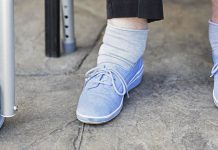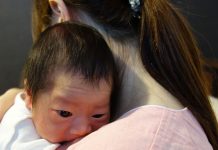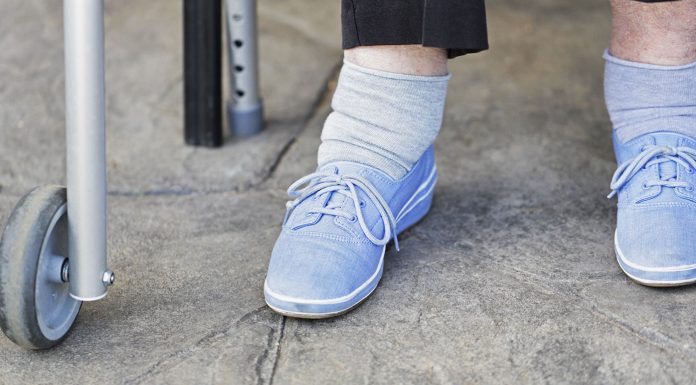The growing demand for nursing school places in recent years has largely plateaued in the cities and fallen in some provincial areas, according to an informal survey of nursing schools.
Nursing Review spoke to all 16 nursing schools about enrolment trends in the wake of a tight job market for new graduate nurses in recent years.
Application numbers for nursing schools had been on the rise in recent years and while many schools reported that demand had now plateaued or fallen most did not believe concerns about job prospects were the cause.
Many instead noted an ongoing trend of nursing school cohorts getting younger as more school-leavers and under-25 year olds saw the nursing degree as providing them with a useful, work-ready qualification (but nursing intakes were still predominantly female, with most schools having only 4-8 per cent male students).
While only 59 per cent of new graduates had been successful in gaining NETP or NESP places by the end of the year, most nursing schools believed that many more of their graduates had since found jobs and expected most graduates to be employed by the end of March.
Provincial downturn
Provincial areas were most likely to report a downturn in either interest or intake.
Southland Institute of Technology, whose zero-fee policy has attracted high interest in the past, has reported a significant downturn in applications this year and also a flurry of phone calls from potential applicants concerned about job prospects for nurses.
Sally Dobbs, head of the nursing school, said she got a lot of phone calls when the news came out that only 59 per cent of graduates got jobs in new graduate programmes. She had also noted that the usual surge of out-of-town applications in January, from late applicants declined places in other schools, had not occurred this year. Dobbs said it usually took about 90 students but it was “less than that” this year and only included one international student.
Since last year SIT has required all New Zealand applicants to attend a half-day on-campus group interview process that included a maths test, essay and overview of programme. Dobbs said it was working well for students, the school, and the local DHB, with improved retention rates and good feedback from hospital staff.
Taranaki’s WITT associate head of school Jessica Knight reported high application numbers but struggled to translate those into enrolments and would be falling short of its usual intake of 55 this year, with 49 students more likely. But good retention rates in other years meant the school was the fullest it had ever been.
Ngaira Harker-Wilcox, head of Waiariki Institute of Technology’s nursing school, said it had decided to drop its intake significantly this year because of job market trends and to ensure quality clinical placements. She said while application numbers were high, it was taking 70 students this year compared to 100 last year.
“We are trying to meet our stakeholders needs”.
She said Waiariki continues to have a high proportion of Maori students in its intake and has good retention success rates. The institute had a higher male intake this year of about 10 per cent, and like others, she had noticed a growth in students under-25.
Jane Anderson, head of NorthTec’s nursing school, said it had a small reduction in applications for its February intake and had just met its intake target of 45 (two are international students). Anderson believed the lower application numbers were due to word getting out about the strict entry criteria into its degree programme, with all the courses delivered online with the support of face-to-face tutorials.
Auckland and Waikato schools steady
Susan Shaw, acting head of Auckland University of Technology’s nursing school, said application numbers had increased in 2010 and 2011 but had a slight decrease in 2012 and had then stabilised this year. She said the faculty still turned away hundreds of students a year and filled the usual 160 places in its February intake.
Glennis Birks, head of Waikato’s Wintech nursing school, said it had had a stable number of applications and its February intake was virtually unchanged at between 170-180 students, including 24 in its Tihei Mauri Ora stream, and about 25 international students. It will take another 130-150 in July.
She also noted increasing interest from school leavers had led to the average student age decreasing, with students seeing nursing as providing diverse employment opportunities on graduation and showing no particular concern about job prospects.
The University of Auckland nursing school reported that the number of applications went up considerably for its 100 student intake. Head of school Judy Kilpatrick said this year it had 15 per cent males – up on its usual 6-8 per cent – and she was not sure why. The university had also doubled its usual international student intake, up from five to 10 per cent, but she said it was made clear to international students that there were no guarantees of getting a job in New Zealand on graduation.
Willem Fourie, head of Manukau Institute of Technology’s nursing school, said interest in its February intake was similar to recent years, and Manukau had filled its intake with about a third being under-21 years old.
“Nobody appears to have been put off by the fact that not necessarily all nurses get a job – it may well impact later”.
He said its BN Pacific intake was just short of its full intake of 30. MIT has taken on no international students in recent years in agreement, with Counties Manukau District Health Board’s “grow your own” policy.
Sue Gasquoine, head of Unitec’s nursing school, said it had had ‘hundreds and hundreds’ of applications for its February intake and had a very full programme so job concerns did not appear to have impacted.
Other regions report diverse interest
Annette Huntington, head of Massey University’s nursing school, said while it still had considerable interest in its three programmes, including an initial waiting list, there may have been a slight reduction in firm application numbers this year.
“Probably we didn’t turn away as many as we turned away last year.”
She said it filled its capped intakes of 105 students in Wellington, 50 in Palmerston North, and 35 in Albany, with the two smaller intakes being predominantly school-leavers and the Wellington intake being more diverse. She said it only had two or three international students over its three intakes this year.
Otago Polytechnic’s head of nursing, Linda Kinniburgh, said applications were slightly down on the previous year but had its full complement of students. She said after “squeezing” last year’s February intake up to a high of 120, it had been brought down to a normal complement size of 113 this year, including five international students, to ensure quality placements in primary health care where it had to compete with medical students.
Kinniburgh said it also had noticed the trend toward younger students, and in Otago, it particularly had a high percentage of 19-20 year old students who had often studied a year at university and then decided to switch to nursing.
UCOL’s nursing school is reporting ongoing growth in its satellite programmes with its Whanganui intake growing from 35-38 to 46 this year and likewise Wairarapa had increased from 30 to 38.
Penny O’Leary, the nursing school head, said its Palmerston North February intake was similar to last year at about 80 plus students on top of that it had about 20 international students enrolments but some of those would start in the second year of the BN. She said it had slightly more Maori students this year (11 compared to six the previous year)
Rachael Vernon, head of nursing at Hawke’s Bay’s EIT, said interest was high and it still had a waiting list after filling its intake of 30 places in Gisborne and the 80 places on its Hawke’s Bay first intake of the year. Vernon said EIT had noticed in recent years a shift in the age of its cohort.
“If you’d asked me three years ago, I would have said the majority of our cohort were in 30s or 40s, but if you asked me now, I’d say they are in their 20s and there are more school leavers.”
Kathy Holloway, dean of Whitireia Community Polytechnic’s health faculty, said while it could be argued that negative publicity about new graduate’s job struggles could have put people off it, Whitireia had had high interest in its programmes this year and had to put some students on a waiting list.
She said it had also noted an increasing number of younger students, and in this year’s intake, about 45 per cent would be under 25.
“People are coming from school wanting to be nurses – it is probably a reflection of the global economic environment.”
Karen Monahan, head of NMIT’s nursing school, said it had 136 applications for 60 places, which was similar to the previous year, and it had students on a waiting list. Unusually, it did have two international students this year, both from Canada.




















